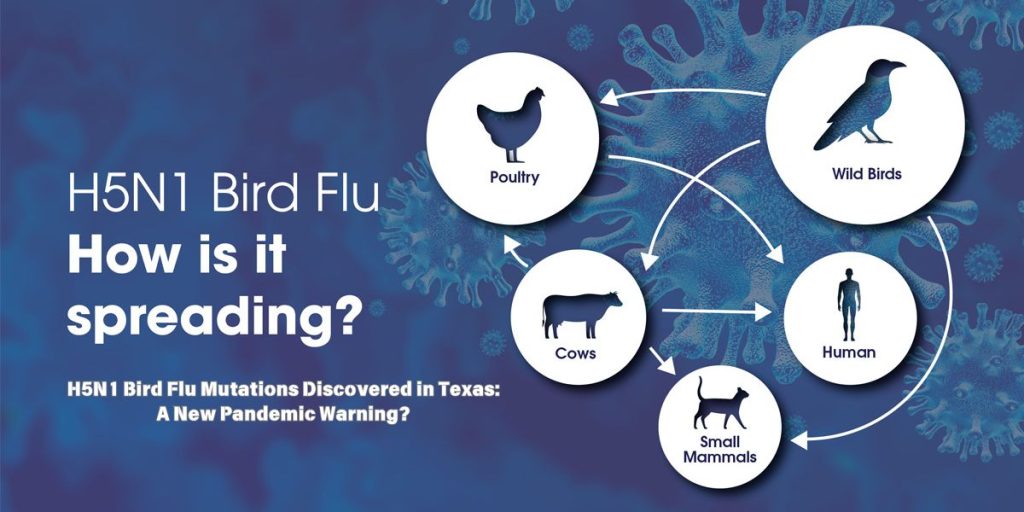Texas Researchers Uncover Key Mutations in H5N1 Bird Flu Strain with Increased Pathogenic Potential
San Antonio, TX — Scientists at the Texas Biomedical Research Institute (Texas Biomed) have identified nine critical mutations in an H5N1 bird flu strain isolated from a human in Texas. These mutations, which are absent in similar strains found in dairy cattle, enhance the virus’s ability to replicate in human cells and cause severe disease, including heightened replication in brain tissue during laboratory experiments.
While the findings highlight the virus’s alarming capacity for adaptation, the study offers reassurance that current FDA-approved antiviral treatments remain effective against this mutated strain.
Alarming Mutation Patterns
Published in Emerging Microbes & Infections, the study compared the human strain with one found in dairy cattle. The research revealed that the human strain replicates more efficiently and causes more severe disease in lab models.
“The clock is ticking for the virus to evolve to more easily infect and potentially transmit from human to human, which would be a serious concern,” said Dr. Luis Martinez-Sobrido, senior author and professor at Texas Biomed.
The mutations in the human strain suggest the changes occurred after transmission from the initial host species, raising concerns about the virus’s potential to adapt further in humans.
Effective Antiviral Treatments
Despite the mutations, tests showed that the strain remains susceptible to existing FDA-approved antiviral medications.
“Antivirals will be a crucial tool in containing the spread of H5N1 until effective vaccines are developed,” noted Dr. Ahmed Mostafa Elsayed, lead author of the study.
H5N1’s Broad Impact
The ongoing H5N1 outbreak has affected wild birds, mammals, and for the first time in 2024, dairy cattle. While human infections have been rare and generally mild, the first U.S. death attributed to H5N1 was reported in January 2025 after exposure to infected poultry.
The mutations identified in the human strain underscore the need for vigilance as the virus continues to adapt across species.
Next Steps and a Call for Action
Texas Biomed is focusing on understanding how these mutations contribute to the virus’s ability to infect a wide range of hosts. Researchers aim to pinpoint what drives the differing severity of infections across species, such as mild cases in cows versus fatal outcomes in cats.
In a related study published in mBio, Texas Biomed researchers and collaborators emphasized a “One Health” approach to mitigate the risk. Recommendations include enhanced decontamination protocols for livestock equipment and stricter quarantine measures to prevent cross-species transmission.
Urgent Need for Preparedness
As H5N1 continues to evolve, experts stress the importance of enhanced surveillance, vaccination development, and antiviral stockpiling to reduce the risk of a potential pandemic.
For more details, refer to the studies in Emerging Microbes & Infections and mBio.





More Stories
H5N1 Bird Flu Mutations Discovered in Texas: A New Pandemic Warning?
H5N1 Bird Flu Mutations Discovered in Texas: A New Pandemic Warning?
H5N1 Bird Flu Mutations Discovered in Texas: A New Pandemic Warning?